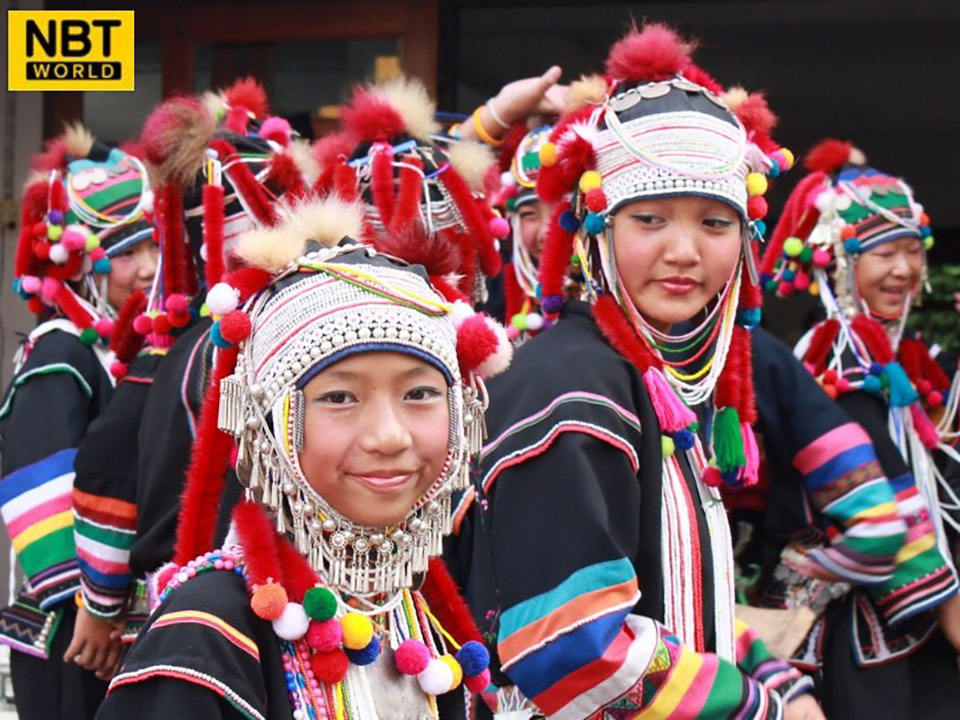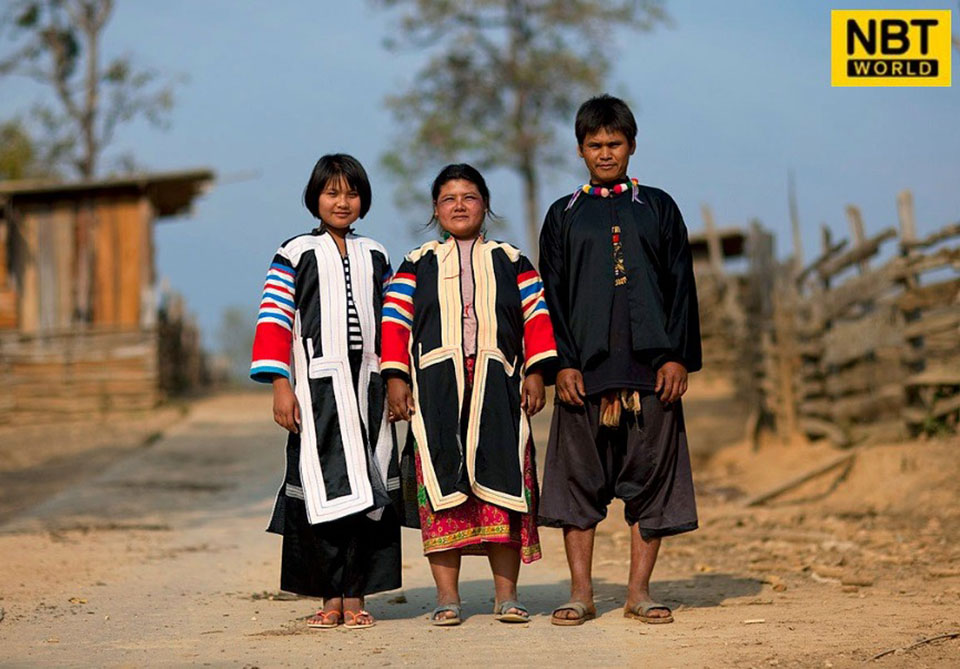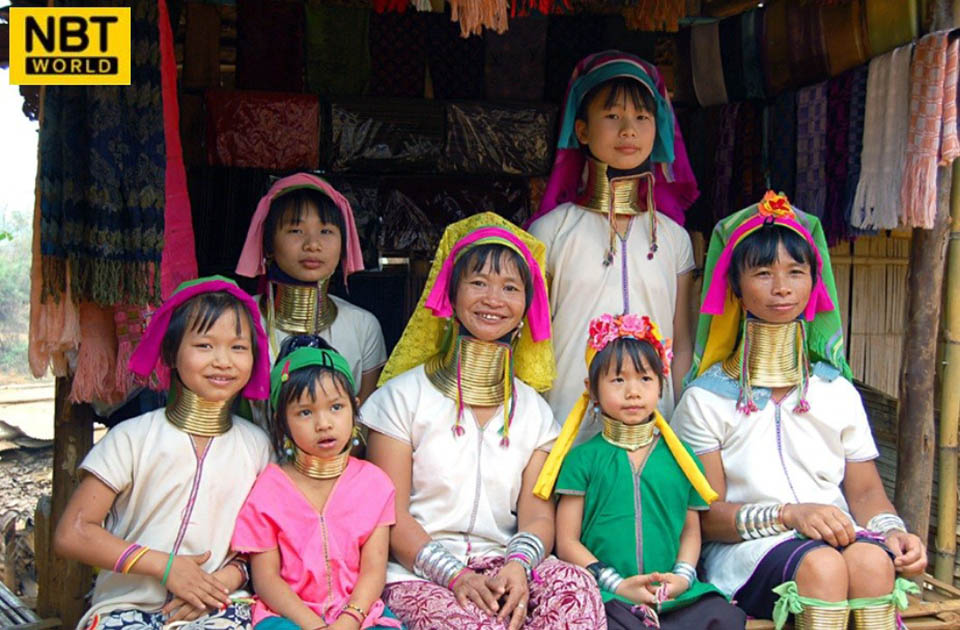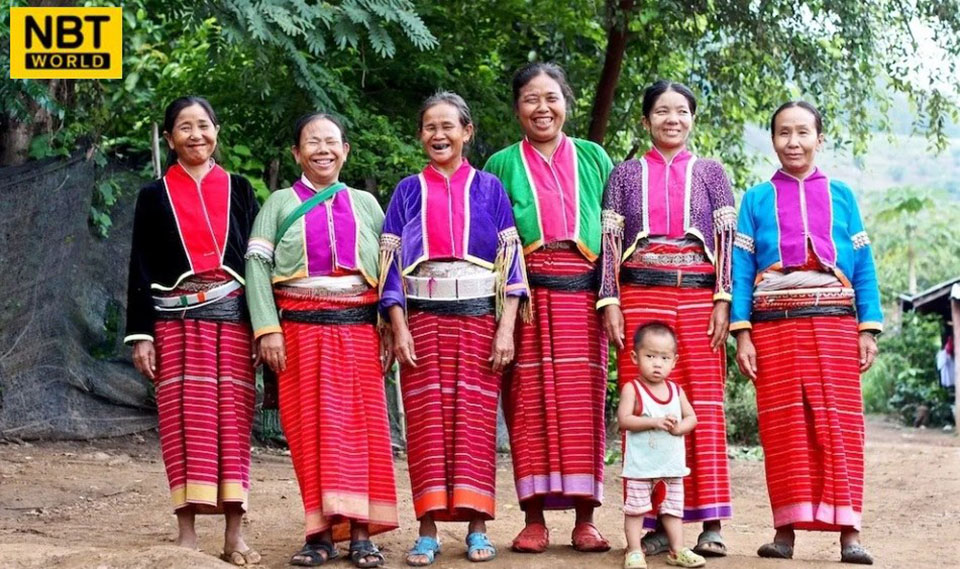
In the serene landscapes of Chiang Mai and Chiang Rai provinces, close to the Myanmar border, you’ll find the smallest group of Thai hill tribes – the Palong. Renowned for their wooden stilt houses and agriculture focused on tea, chilies, and sugarcane, the Palong culture is rich and unique. The women, easily recognizable by their long red dresses, blue or pink jackets, large silver waistbands, and gold-decorated teeth, embody a unique blend of Buddhism and animism, with a strong emphasis on ancestor worship.
Home to around 80,000 people, the Akha tribes reside in the higher altitudes of the two provinces. Their bamboo houses, elevated on stilts and featuring separate areas for men and women, center around a beautifully carved wooden gate believed to house guardian spirits. The Akha women are distinguished by their black caps adorned with silver coins, reflecting a culture deeply rooted in ancestor worship. Traditionally farmers, the Akha now also create and sell handcrafted items, contributing to a growing tourism economy.
The Lahu tribes are also known for their diverse subgroups, such as the red, black, and yellow Lahu, each with unique traditional dress and dialect. Skilled in hunting and weaving, the Lahu live in stilt houses and are primarily engaged in farming. The village’s spiritual leader’s house is marked by a pole with several flags, symbolizing their original animist beliefs, though many have now embraced Buddhism or Christianity.

The Padaung, a subgroup of the Karen originally from Myanmar, is famously known as the long neck hill tribe. The women, identified by the brass rings worn around their necks from a young age, appear to have elongated necks, a unique cultural practice. These rings, also worn on their forearms and ankles, symbolize beauty and cultural identity. Unmarried girls often wear long white dresses. Shifting from traditional farming, the Padaung now largely depend on tourism and handicraft sales for their livelihood.
To address the challenges of opium poppy cultivation, especially prevalent in the Golden Triangle, His Majesty King Bhumibol Adulyadej The Great initiated the Royal Development Project for Hill Tribes. This program educates tribespeople in modern, eco-friendly farming techniques, improving lives and reducing dependence on opium. Today, this initiative has led to the cultivation of various fruits, vegetables, and flowers across Northern Thailand, contributing significantly to the regional economy.
Tourism has emerged as a crucial source of income for the hill tribes, especially for the renowned Padaung tribe. Tourists are given a chance to experience the rich cultural heritage of these groups, providing a deeper understanding of their distinct traditions and lifestyles. These encounters present a unique opportunity to explore the varied and dynamic cultural landscape of Thailand’s hill tribes. (NNT)










